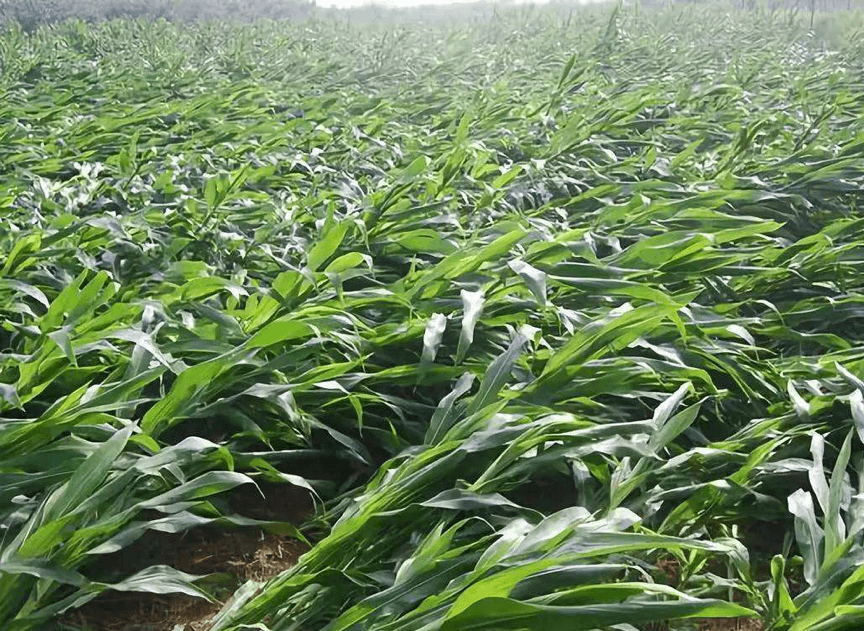

Corn (Maize)
Maize is an annual herb of the grass family. Compared with traditional grain crops such as rice and wheat, it is tolerant against drought, cold and infertile land, and features excellent environmental adaptability. A high-yielding grain crop in China, maize is an important source of food for animal husbandry, breeding, and aquaculture, as well as an indispensable raw material for the food industry, the medical and healthcare industry, the light industry, and the chemical industry.


In China, maize cultivation is concentrated in the northeast, north and southwest, forming a long oblique maize planting belt extending from the northeast to the southwest. There are large maize cultivation areas in Heilongjiang, Jilin, Hebei, Shandong, Henan, Inner Mongolia and Liaoning, which account for 66% of China’s total. In order to help to improve aerial application operations for maize, this article will make general analysis considerations for different growth stages of maize.


Weeding in the seedling stage
From the emergence of the seedling to the jointing stage, the root, leaf and stalk differentiation of maize fill themselves out with sufficient light, rain and timely fertilization. In the seedling stage, pay more attention to checking whether the maize seedlings emerge consistently and that the stems and branches are strong, so as to lay a solid foundation for a good yield.
In this stage, aerial application drones are mainly used in post-emergence weeding operations, controlling annual and perennial grasses and broadleaf weeds with nicosulfuron, atrazine and rimsulfuron.


1. It will take 2~6 hours for the post-emergence herbicides to be absorbed after application. The weed control effectiveness is closely related to temperature and humidity. When applied at high temperatures and low relative humidity, the droplets will evaporate faster in the air and on the leaves, resulting in poor weed control effectiveness. Besides, phytotoxicity can easily occur at high temperatures, so it is recommended to apply the herbicides in the morning and evening.


2. The general safety period for post-emergence applications of nicosulfuron is the 3-5 leaf stage, and phytotoxicity is easy to occur before the 2-leaf stage or after the 6-leaf stage. Sethoxydim is a selective intake-transportation pre-emergence and post-emergence herbicide, which is mainly absorbed by the root system, and little by the stem and leaves. Easily washed into the deep soil by rainwater, it can suppress deep-rooted weeds. It is very easy to cause phytotoxicity, which will last for a very long time.
3. It is very important to note that both nicosulfuron and atrazine are relatively safe for maize, but dangerous to other crops. Soybeans, rice, wheat, cotton, vegetables, and peach trees are all sensitive to them, so do pay attention to wind direction and wind speeds during operation to avoid phytotoxicity caused by drifting droplets. It is recommended to use the XR110015VS series nozzles to increase the droplet size properly and add additives to aerial applications to reduce the drifting distance of droplets.
Application of chlormequat in the small trumpet stage
Maize is a high-stalk crop with a normal height up to 3 meters, and is prone to lodging in case of long-time rain and strong wind, resulting in yield reduction or even total crop failure. To prevent maize lodging, applying maize chlormequat is used more and more widely in addition to agronomic measures such as improving cultivation management. The chlormequat inhibits the biosynthesis of gibberellin in the plant to control its spindly growth, resulting in a sturdy stalk, well developed root system and resistance to lodging.


The chlormequat is mainly applied on the maize in the 8-10 leaf period, and uniform spraying is required to avoid repeated spraying and missed spraying, as the former will lead to excessive inhibition of maize growth, and the latter will have no effect. The operation should be carried out at low wind speeds to ensure good effect. In addition, when applying the chlormequat, we should follow the basic principles of “spraying the tall plants but not short ones, the strong but not the weak, and the black but not the yellow”, that is, choose tall and strong plants as the target of operation, and avoid working on plants in poor growth.
Integrated maze pest management
Lepidopterous pests such as corn borers, walkers and fall armyworms, as well as piercing-sucking and rasping-sucking mouthpart pests such as thrips, red spiders and aphids can be found on the maize during the growing season. Since walkers and fall armyworms are overeating pests, they must be controlled before the 3rd stage. If they are not prevented early, outbreaks may occur, resulting in severe losses.


Notes for integrated operation
1. In regions with large maize planting areas, it is not very easy to plan maize plots. We can reasonably plan the routes with aerial application drones to avoid injury and heat stroke caused by walking in the maize fields.
2. As the maize stalks are tall, it is recommended that the operator stands higher up to better observe the aerial application drones while getting a good video signal in the case of operation at the high stalk stage.
3. It is forbidden to enter the operation area after the application is completed (especially in the case of applying fumigating insecticides) to avoid inhalation poisoning when the maize has grown tall.
Source: https://ag.dji.com/case-studies/dji-ag-case–en-maize
Warn prompt: Τhe content and parameters provided here are just for your reference. You should adjust the operation mode and the parameters and use a correct way to spray your field according to the different weather, the crop characters, the habit or history of using chemicals (you could change other chemicals in case that the resistance occurs), etc. If you are not sure what operation parameters you will choose or not sure about the spraying efficacy, then you should firstly do a small plot test in this field before a big area spray.
